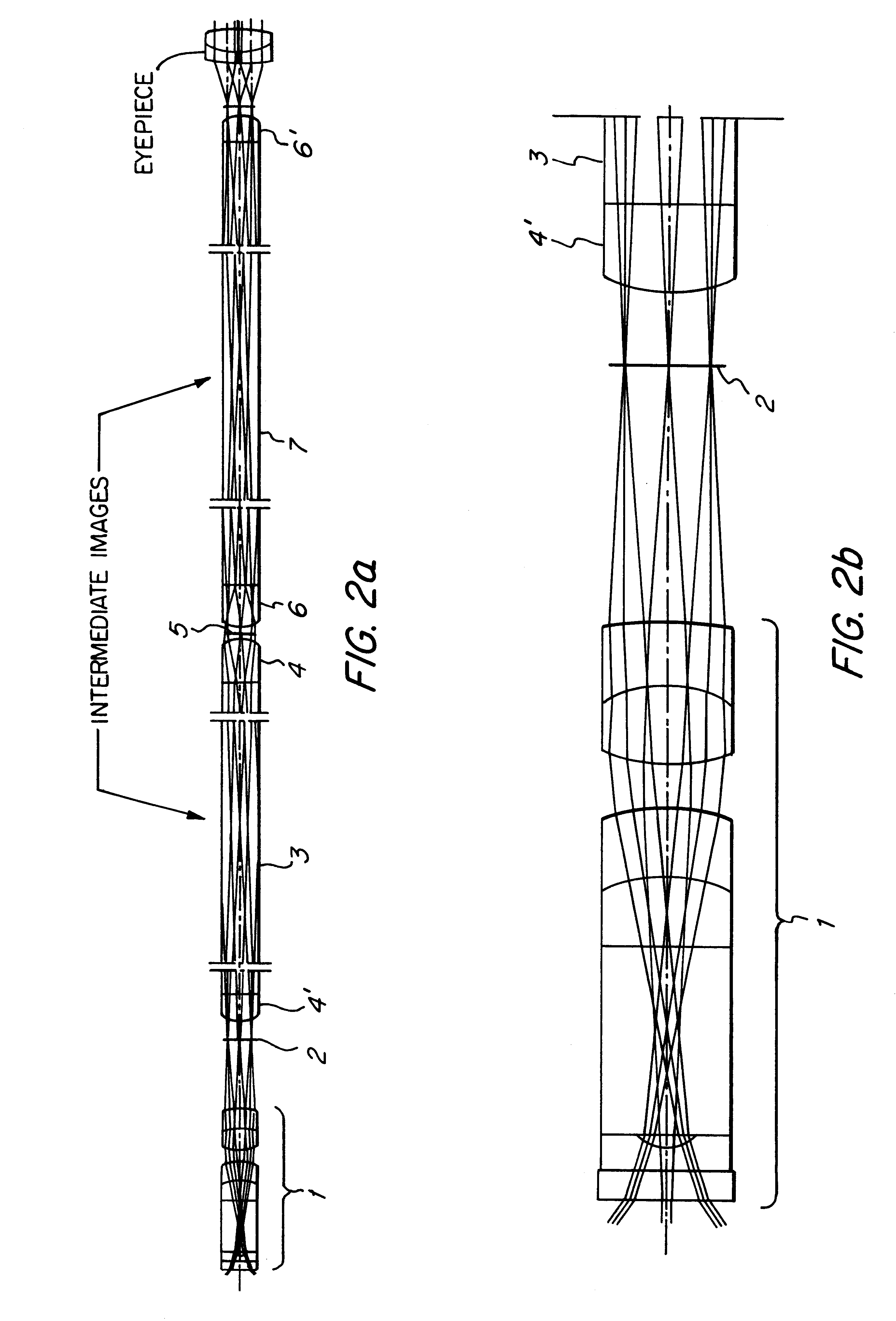Endoscope with at least one reversal system with a non-homogeneous refraction index
a refraction index and reversal system technology, applied in the field of endoscopes with at least one reversal system with a non-homogeneous refraction index, can solve the problem of too high production cost for commercial applications in engineering or medicin
- Summary
- Abstract
- Description
- Claims
- Application Information
AI Technical Summary
Benefits of technology
Problems solved by technology
Method used
Image
Examples
first embodiment
The following Tables 1 to 3 list numerical data of three numerical variants of the
TABLE 1
TABLE 3
The area numbers i are counted in succession from that face of the rod 3 which faces the plane 2 (number 1) to that face of the rod 7 which faces the plane 8 (number 6). Cemented areas are listed only once as usual. The spacing indicated in the line of an area number i is the lens thickness or the so-called air gap between the apexes of the areas i and (i+1) which are located on the optical axis. The refractive index n and the Abbe coefficient v are correspondingly the material data of the material between the areas i and (i and 1). These specifications apply by way of analogy also for the following embodiments.
The radii of the areas and the spacings or thicknesses are indicated in millimetres. The refractive indices n and the Abbe coefficients are respectively specified for the wavelength .lambda.=587.6 nm.
The following Table 4 compares the optical properties, i.e. the lateral spherical ...
second embodiment
In the invention a respective plano-convex lens 4, 4' or 6, 6' is cemented on both faces of the rods 3 or 7, respectively, which are "optically thin".
FIG. 2a shows the overall structure whilst FIG. 2b illustrates the structure of the 0.degree. lens.
Either rod 3 or 7 consists of a material having an inhomogeneous refractive index whilst the lenses 4, 4' or 6, 6' consist of a material having a homogeneous refractive index.
FIGS. 3a and 4a are view of the overall structure in which a 30.degree. and a 70.degree. lens is used whilst FIGS. 3b and 4b show the structure of the respective lenses.
The following Table 5 reflects the numerical data of the reversing system in accordance with the second embodiment which provides for three image reversals:
Like in the previous embodiments, "*" denotes the materials having an inhomogeneous refractive index.
As has been set out in the foregoing, the lens 1 need not present a tangential and sagittal (lateral) field curvature--which is specified for a cer...
PUM
 Login to View More
Login to View More Abstract
Description
Claims
Application Information
 Login to View More
Login to View More - R&D
- Intellectual Property
- Life Sciences
- Materials
- Tech Scout
- Unparalleled Data Quality
- Higher Quality Content
- 60% Fewer Hallucinations
Browse by: Latest US Patents, China's latest patents, Technical Efficacy Thesaurus, Application Domain, Technology Topic, Popular Technical Reports.
© 2025 PatSnap. All rights reserved.Legal|Privacy policy|Modern Slavery Act Transparency Statement|Sitemap|About US| Contact US: help@patsnap.com



